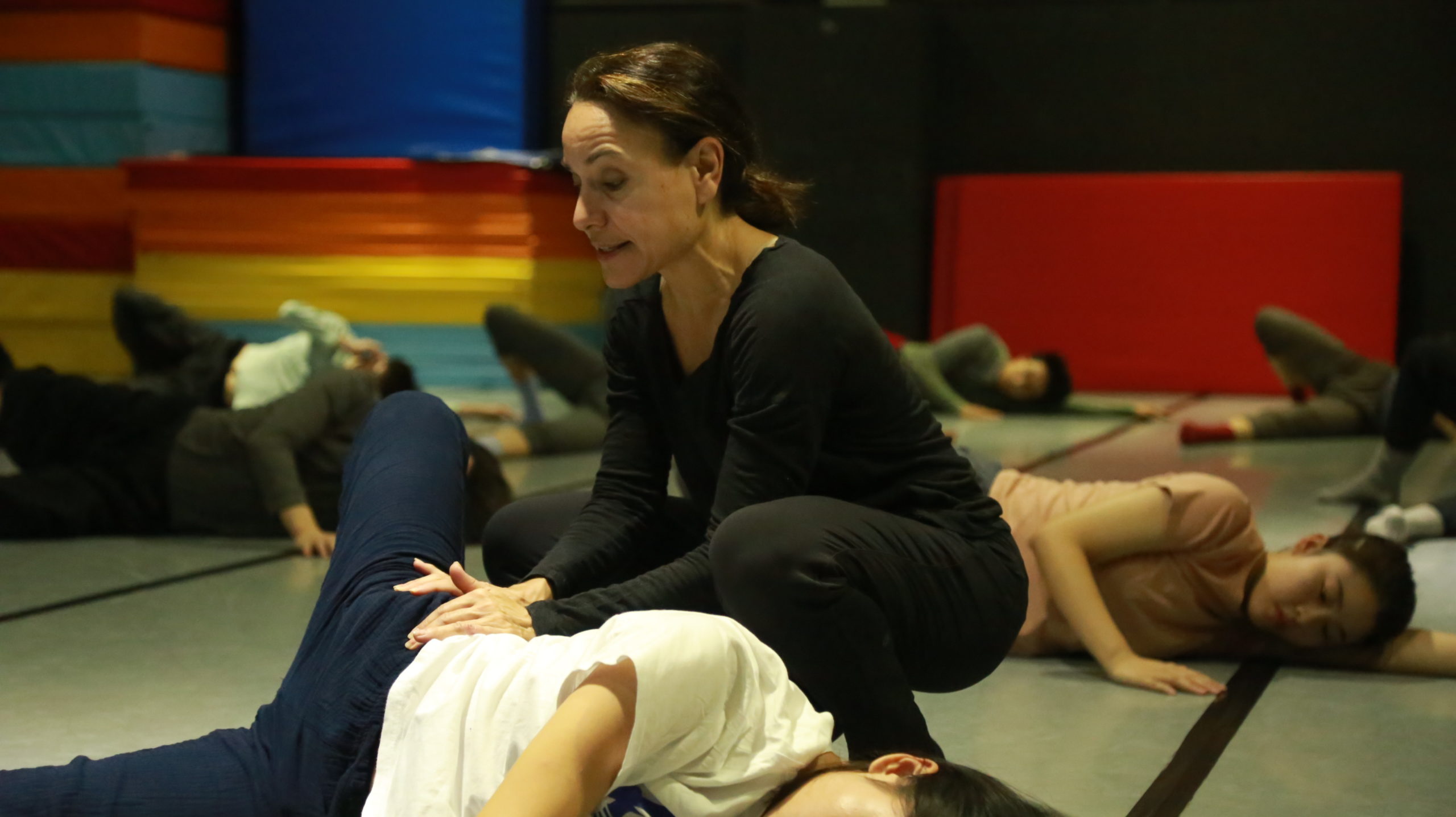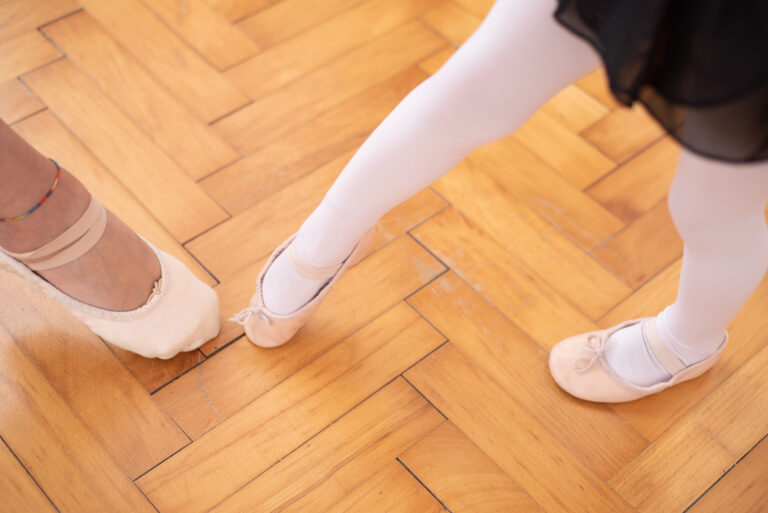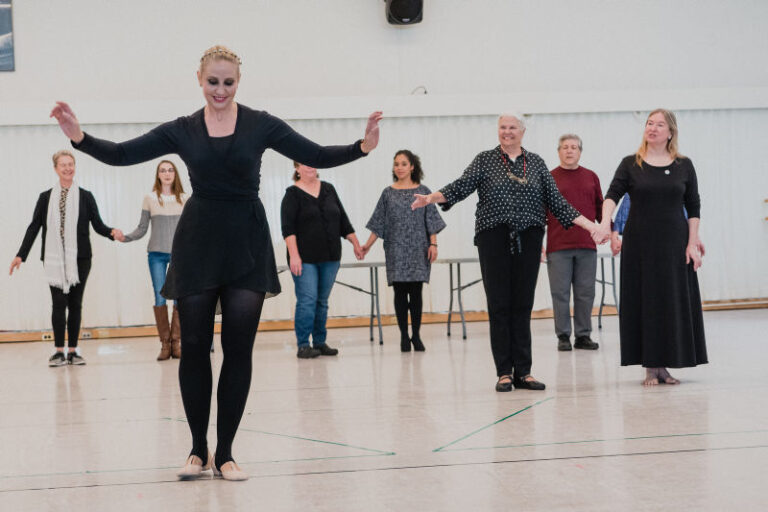
What is “backspace”? It’s one of those terms that you might throw around in the studio to ask your students to move more three-dimensionally, or to keep them from bumping into each other when moving backwards. But what does backspace really mean?
“The backspace is a source of untapped energy,” says Pamela Pietro, a professor at New York University Tisch School of the Arts, who focuses on getting students to access their backspace in her classes. “We tend to be frontal beings, when walking around the streets or in our normal lives, but the three-dimensionality of our bodies includes the unknown behind us. We know that there’s something back there, but how do we confidently move into that space?”
Dance Teacher asked Pietro how she helps students develop an awareness of their backspace.
Start From the Ground Up
Pietro’s approach starts on the floor. “I talk a lot with my students about grounding into the floor,” she says. “One of the first things I do in my classes is have students find an X-shape.” She finds that giving her students a chance to connect to the earth helps them tap into feeling the back of their bodies. Once they rise, she encourages them to think about their relationship to the floor through physics. “It’s the body pushing into the ground, and the earth pushing back up,” says Pietro, who urges her students to think of being on an elevator.
360-Degree Head and Rib Cage
Reminding her students that their heads and rib cages are circular, and part of both the front and the back of their bodies, is paramount to Pietro’s teaching of backspace. While still on the floor, she has her students pay attention to the 8-to-12–pound weight of their heads, supported by the floor, and practice feeling their breath throughout the 360 degrees of their rib cages. “Sometimes it’s hard for students to realize that the rib cage’s home is in your back body,” she says. “But it connects into your spine, and lives in your backspace.” Once the dancers are standing, Pietro asks them to feel the vertical axis, and asks if they can still feel the backs of their heads and rib cages.

Activate the Back
When it comes to helping your students tap into the backspace, imagery and somatic awareness are only some of the tools available to you. Pietro also incorporates exercises into the beginning of her classes, while dancers are still on the floor, to help activate the muscles in the backs of their bodies.
“Dancers tend to use the front of their bodies more than the back of their bodies, so our quadriceps do a lot of work, and our glutes and hamstrings can become quite weak” says Pietro. To counteract those tendencies, she has students lie on their stomachs and go in and out of a sphinx pose, focusing on their backs, hamstrings and glutes. To take it to the next level, have students do simple leg lifts from the same position.
Moving Through Space
As class progresses, Pietro recommends giving dancers improvisational prompts focused on moving into the backspace. However, she notices that students’ first tendency is usually to move from their butts. To counteract that, she urges students to imagine that their feet have eyes that are guiding them backwards. “Once they find their feet into the backspace, they understand that there are possibilities for motion back there,” she says.
Prompts can start from a pedestrian place, tasking dancers with walking and then running backwards, then progressing into free improvisation, all still moving into the backspace. This movement can also be done safely with the eyes closed, or with the studio’s mirrors covered. “The most beautiful moment for me is with eyes closed,” says Pietro. “I’m much more interested in what’s moving them from the inside, not what they’re looking at in the mirror.”
The Benefits of Backspace
Teaching your students to gain comfort with moving into the unknown can transform them into more confident and engaging performers. When watching dancers in action, Pietro says that she can always tell when artists are embodying their backspace. “It’s about a circular action of energy moving through the back of the head and going forward. Their movement completely changes, and becomes fuller and richer,” she says. “You look at a dancer and think ‘Wow, they really understand their body in space.’ It’s actually quite profound when you see it.”
For a video tutorial on how to help your students find their backspace, watch this video.




